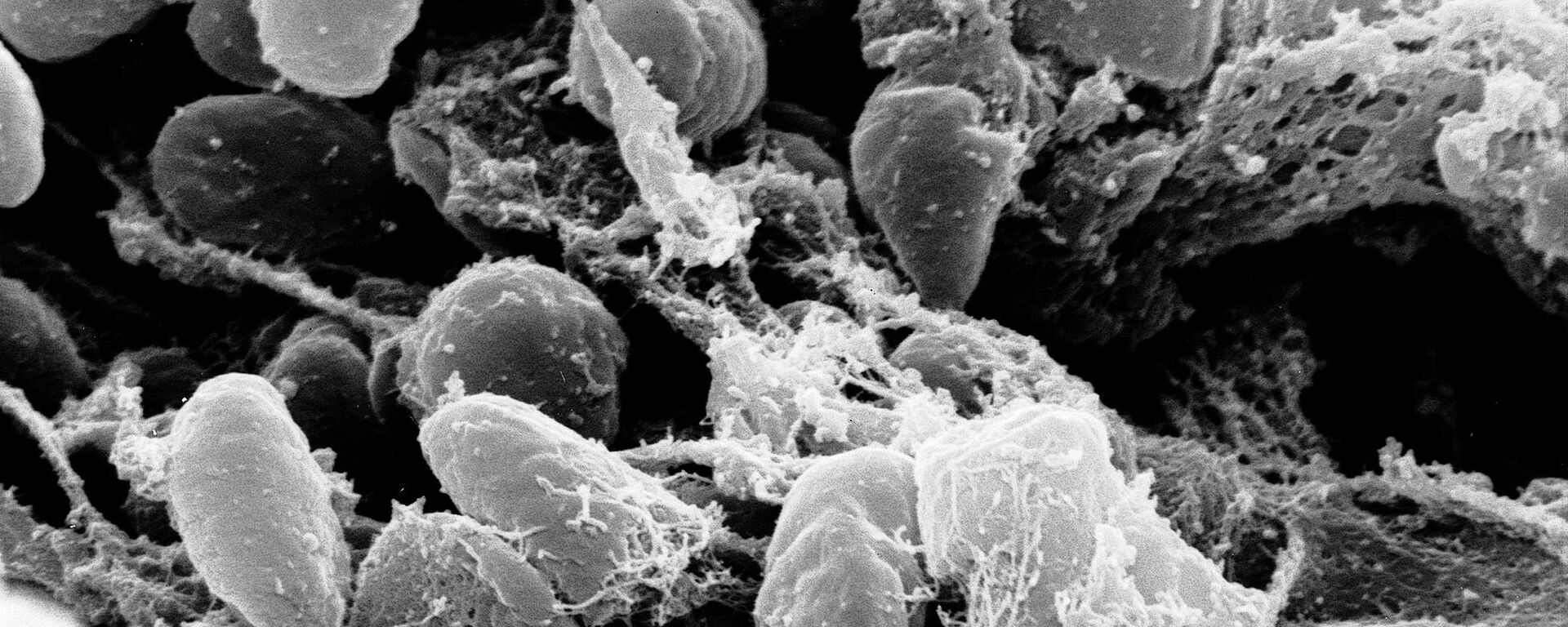https://sputnikglobe.com/20230308/gene-that-boosts-protection-against-plague-covid-raises-risk-of-autoimmune-diseases-study-says-1108189678.html
Gene That Boosts Protection Against Plague, COVID Raises Risk of Autoimmune Diseases, Study Says
Gene That Boosts Protection Against Plague, COVID Raises Risk of Autoimmune Diseases, Study Says
Sputnik International
A variation of the gene ERAP2, which was more likely to be carried by survivors of the Black Death, appears to be helping people deal with respiratory diseases such as COVID.
2023-03-08T16:57+0000
2023-03-08T16:57+0000
2023-03-08T16:57+0000
science & tech
bubonic plaque
covid-19
gene
protection
https://cdn1.img.sputnikglobe.com/img/07e7/01/02/1105984620_0:405:1996:1528_1920x0_80_0_0_195e3eea4f1a46db192603cc3847ac6a.jpg
Genes that helped people survive the infamous medieval plague epidemic known as the Black Death seem to be helping humans fight against infections today, according to a new study published this week.The research, led by scientists from the University of Bristol in collaboration with their colleagues from several other British universities such as Imperial College London, focused on particular variants, or alleles, of the ERAP2 gene.Previous studies revealed that people who possessed these alleles had better odds of surviving the aforementioned plague pandemic as compared to those who did not have them, a press release by the University of Bristol noted.The new study suggests that these same alleles continue to afford humans protection against bubonic plague and other infections, such as COVID-19.He did point out, however, that there appears to be a tradeoff of sorts, and that these genes apparently make people more susceptible to other diseases."Although we don't know the exact mechanism influencing disease risk, carriers of alleles that provide more protection against respiratory disease seem to have an increased risk of autoimmune disease,” Hamilton mused. “It is potentially a great example of a phenomenon termed 'balancing selection' - where the same allele has a different effect on different diseases."
https://sputnikglobe.com/20220616/researchers-discover-origin-of-the-black-death--1096355385.html
Sputnik International
feedback@sputniknews.com
+74956456601
MIA „Rossiya Segodnya“
2023
Sputnik International
feedback@sputniknews.com
+74956456601
MIA „Rossiya Segodnya“
News
en_EN
Sputnik International
feedback@sputniknews.com
+74956456601
MIA „Rossiya Segodnya“
Sputnik International
feedback@sputniknews.com
+74956456601
MIA „Rossiya Segodnya“
gene variants, respiratory disease protection
gene variants, respiratory disease protection
Gene That Boosts Protection Against Plague, COVID Raises Risk of Autoimmune Diseases, Study Says
A variation of the gene ERAP2, which was more likely to be carried by survivors of the Black Death, appears to be helping people deal with respiratory diseases such as COVID.
Genes that helped people survive the infamous medieval plague epidemic known as the Black Death seem to be helping humans fight against infections today, according to a new study published this week.
The research, led by scientists from the University of Bristol in collaboration with their colleagues from several other British universities such as Imperial College London, focused on particular variants, or alleles, of the ERAP2 gene.
Previous studies revealed that people who possessed these alleles had better odds of surviving the aforementioned plague pandemic as compared to those who did not have them, a press release by the University of Bristol noted.
The new study suggests that these same alleles continue to afford humans protection against bubonic plague and other infections, such as COVID-19.
“This gene essentially chops up proteins for the immune system," said Dr. Fergus Hamilton, lead author of the study.
He did point out, however, that there appears to be a tradeoff of sorts, and that these genes apparently make people more susceptible to other diseases.
"Although we don't know the exact mechanism influencing disease risk, carriers of alleles that provide more protection against respiratory disease seem to have an increased risk of autoimmune disease,” Hamilton mused. “It is potentially a great example of a phenomenon termed 'balancing selection' - where the same allele has a different effect on different diseases."


